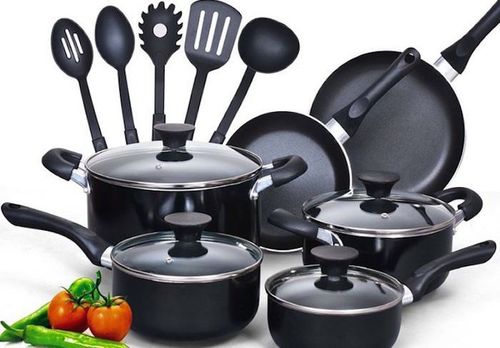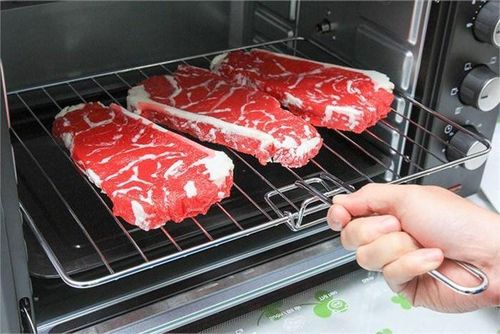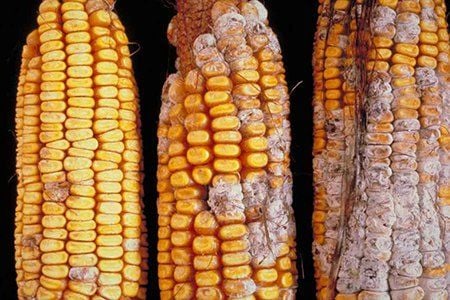This is an automatically translated article.
Every shopping activity in the family today is more focused on health issues and safe cooking utensils is no exception. Aluminum, copper or nonstick cookware has been of recent interest because they can trap chemicals or metals in food.1. How to choose safe cooking utensils
Cooking tools are so diverse that researching safe products requires a lot of different sources of information. To choose a safe cooking tool, users can learn through the following knowledge:1.1. How to clean cookware Cookware should be thoroughly cleaned each time to prevent bacteria build-up and reduce the risk of food-related illness. The safest cookware in the world can still make users sick if it's not cleaned properly.
Cleaning and maintenance needs may vary with each type of cookware and their material. Therefore, users need to know the necessary information about the hygiene requirements of certain cooking utensils and ensure that it is suitable for their family.
1.2. Durability of cooking utensils It is not always possible to purchase safe, durable, high-quality cookware. However, this is not a big deal. Sometimes just a few affordable pots, suitable for each family's financial ability.
At that time, users can take measures to reduce wear and tear and increase the durability of cooking utensils by combining with other suitable cooking utensils. For example, using a wooden spoon or wooden cooking utensils can reduce the risk of scratching a non-stick pot or pan.
1.3. Are cooking utensils harmful to health? This is a big question and can change depending on the user's point of view and health history. For example, multi-person safe cookware made of stainless steel or copper may still not be suitable for people with nickel sensitivities.
For people with hemolytic disease, iron content from cast iron cookware stuck to dishes can lead to iron overload for the body.
1.4. Does the cooking process meet environmental standards? Pots and pans can be a significant environmental waste hazard, with regard to both the manufacturing process and how they are stored. This can result in cookware being considered non-biodegradable after a few uses.
Therefore, buying products from reputable brands that have been tested for safety in the production process will cost a little more.

Cách làm sạch dụng cụ nấu ăn là thông tin đầu tiên bạn cần tìm hiểu
2. Certain types of cooking utensils are safe
2.1. Aluminum cookware Aluminum is a fairly light metal that conducts heat quickly. Aluminum cookware is also easy to clean and reasonably priced. Aluminum residue can stick to food when cooking with this metal utensil and the user may never notice them. Statistically, most of us will consume between 7-9 mg of aluminum per day.Recent user concerns regarding aluminum exposure from cooking utensils may be linked to the development of Alzheimer's disease?
According to studies, aluminum has not been linked to Alzheimer's disease. And according to the Alzheimer's Association, there's little chance that everyday aluminum cooking played a role in the development of the disease.
If you are using aluminum, anodized aluminum may be the right choice. Anodized aluminum safety cookware has been treated with an acid solution that changes the metal's properties. The advantage of anodized aluminum is that it is easier to clean, has similar properties to a non-stick agent and is said to not leave aluminum residue on food like regular aluminum.
2.2. Stainless Steel Safe Cooking Utensils Stainless steel is an alloy containing iron, chromium and nickel. It is called “stainless” steel because of its resistance to rust and corrosion, which makes them an excellent material for making safe cookware.
The advantage of stainless steels is that they tend to distribute heat evenly over the surface, which is especially great when the tool is a flat grill. Besides, if users use lubricants when cooking and soak in water immediately after use, cleaning stainless steel cookware will be very easy. Their other advantage is that they are not too expensive compared to some other materials.
There is little reason to believe that cooking with stainless steel utensils is harmful to human health. For safe cookware made from stainless steel to be durable and long-lasting, users should consider products with cores made of copper or aluminum. However, as mentioned above, for users who are sensitive or allergic to nickel, stainless steel can aggravate their health condition.
2.3. Ceramic cookware Most ceramic cookware is not pure. Ceramic pots and pans are made of metal, coated with a non-stick agent (usually silicon) and have a porcelain base. Ceramic cookware needs to be cleaned by hand, and some consumers say it's not able to conduct heat evenly across the surface.

Dụng cụ nấu ăn bằng gốm cần được làm sạch bằng tay
Ceramic cookware may be safe, but there hasn't been much research to prove its safety compared to other materials. However, one thing is for sure, ceramic cookware is safe at high temperatures compared to traditional Teflon non-stick pots and pans.
Keep in mind that ceramic cookware is not completely safe for health, as many glazes (used to seal ceramics) can leach unwanted materials (such as heavy) into food or drink.
2.4. Cast iron cookware Cast iron cookware is a favorite among many consumers because of its durability. Cast iron cookware has non-stick properties and gives food a distinct flavor that other pots and pans cannot duplicate.
Cast iron contains iron and iron can leach into food during processing. Cast iron cookware is even seen as an iron supplement for people with anemia.
The disadvantage of cookware made from cast iron is that it is expensive, but because of its high durability, it may be the only tool users need to buy and use for a long time.
If the user is anemic, dishes made from cast iron utensils can improve iron levels and increase blood production in the body. However, for patients with hemolytic diseases, iron levels are so high that the use of cast iron cookware can exacerbate the body's iron overload.
2.5. Copper cookware Copper cookware has the advantage of good thermal conductivity and is similar to the nutritional value of iron. Typically, pans made from this material will have a base made of another metal (such as stainless steel) and an outer layer of copper.
However, when processing food, copper can leach into food at levels that are not safe for the body to absorb. In fact, unglazed copper utensils are not safe for everyday cooking, and tin and nickel utensils coated with copper are no better.
2.6. Non-stick tools Non-stick coatings include complete coatings on the surface of different materials that make it easier for users to separate cooked food from the surface of non-stick pots or pans. The commonly used non-stick agent is called Teflon.
At a time when cookware such as non-stick pans were new in popularity, Teflon was praised for its ease of cleaning and simplicity of use. Cookware with nonstick coating also requires less butter and oil to lubricate the surface, which results in less fat in dishes.
However, a chemical used in the Teflon formulation has been shown to be associated with thyroid disease, lung damage, and even temporary symptoms from smoke inhalation. As a result, the formula and compounds in Teflon were changed in 2013, so cookware with non-stick coatings is now said to be safer for health.
Consumers should be aware that cooking at too high a temperature can still damage the non-stick coating and stick to food.
In short, non-stick cookware is so popular, its affordable price makes it an easy choice but it's unlikely the product you choose is the healthiest.

Chất chống dính có thể bị hỏng nếu nấu ở nhiệt độ quá cao
3. Some tips on choosing safe cookware
Here are some ways to ensure food safety when cooking with any type of cookware, to help minimize your body's contact with any metal or cookware-related materials:No keep food in a pot or pan after it's cooked, unless we're using glass or stone utensils; Avoid using hard metal utensils while preparing food because of the risk of scratching and damaging the surface of pots and pans; Minimize the time food is in contact with metal from cooking utensils; Use a small amount of lubricant (such as olive or coconut oil) with any type of utensils to minimize the amount of invisible metal sticking to food; Clean pots and pans thoroughly after each use; Replace aluminum cookware or nonstick cookware every 2 to 3 years or when chisels or scratches appear on the surface; In summary, there are safety concerns when using nonstick and metal utensils. However, they will not affect everyone in the same way. Users need to consider their budget as well as their health needs to choose the product direction that best suits their family.
Please dial HOTLINE for more information or register for an appointment HERE. Download MyVinmec app to make appointments faster and to manage your bookings easily.
Reference source: healthline.com












